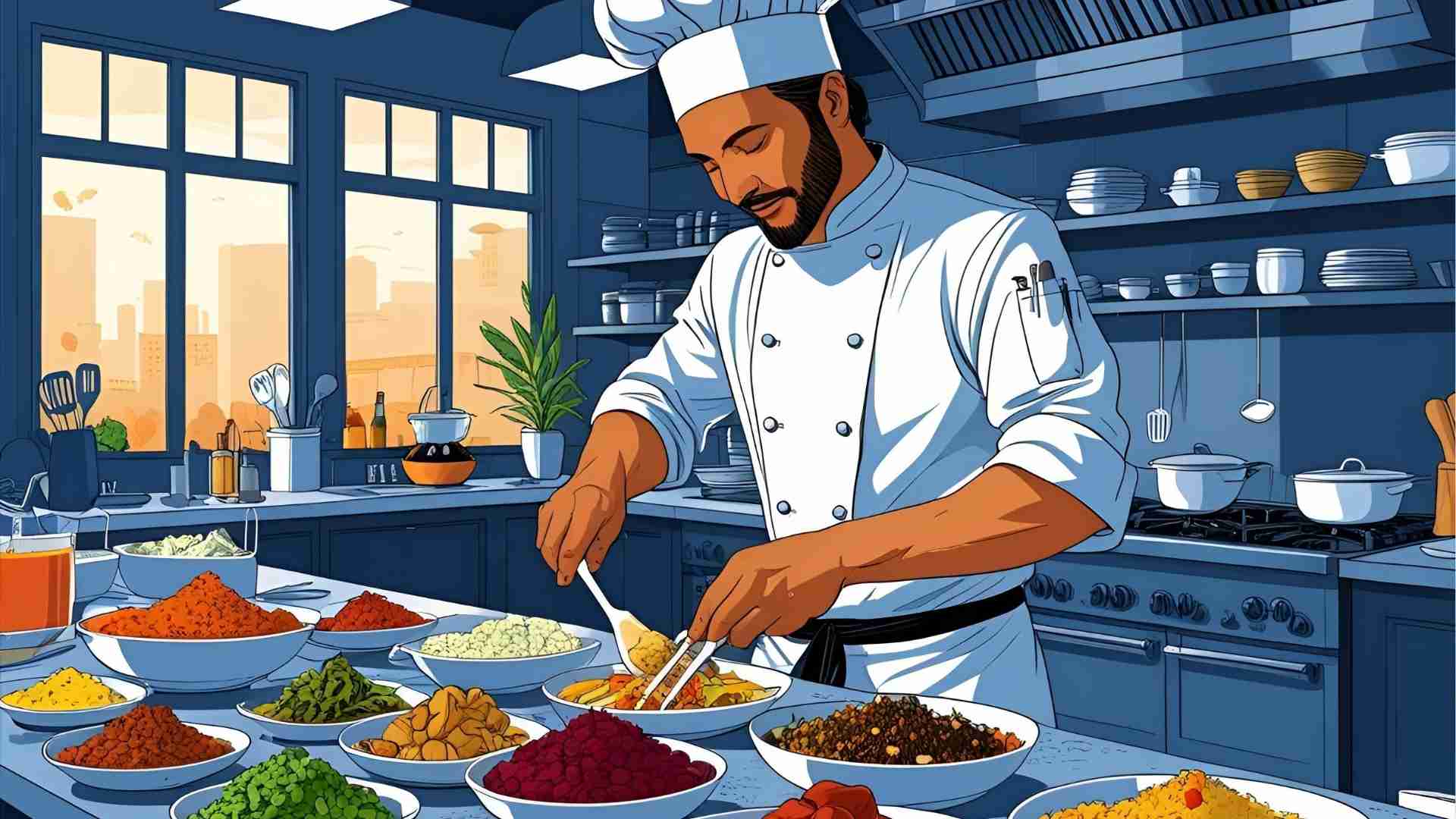Culinary Translation Essentials for Food Professionals
Master culinary translation for food professionals with expert tips on cultural nuances, recipes, and tools like WP Recipe Maker & WPML.
Culinary translation is a specialized skill that transcends mere language conversion. For food professionals—chefs, restaurateurs, bloggers, and culinary educators—it’s a critical tool to connect with global audiences while preserving the authenticity and cultural essence of dishes. This comprehensive guide explores the intricacies of culinary translation, its importance in the food industry, practical applications, and actionable strategies for food professionals to create multilingual content that resonates worldwide. From menus to recipes, cookbooks to marketing materials, effective translation ensures cultural sensitivity, technical precision, and global appeal.
Why Culinary Translation Matters
Culinary translation is more than swapping words between languages; it’s about conveying the soul of a dish, respecting cultural contexts, and ensuring clarity for diverse audiences. Here’s why it’s indispensable for food professionals:
1. Expanding Global Reach
As the world becomes more interconnected, food businesses are increasingly crossing borders. Accurate translations enable chefs and restaurateurs to introduce their cuisine to international markets. For example, a French bistro opening in Tokyo can attract local diners by offering a menu translated into Japanese, ensuring dishes like coq au vin are both understandable and appealing.
2. Enhancing Customer Satisfaction
Clear, culturally sensitive translations improve the dining experience for international customers. A well-translated menu helps diners make informed choices, reducing confusion and increasing satisfaction. For instance, explaining that risotto alla Milanese contains saffron ensures non-Italian diners appreciate the dish’s unique flavor profile.
3. Strengthening Brand Image
High-quality translations signal professionalism and respect for diverse cultures. A poorly translated menu or recipe risks alienating customers or misrepresenting a brand. For example, KFC’s infamous mistranslation of “Finger-Lickin’ Good” into “We’ll Eat Your Fingers Off” in China highlights the importance of cultural nuance in branding.
4. Driving Business Growth
Professional culinary translation opens new markets, attracting a broader customer base. Whether it’s a food blog reaching readers in Spain or a restaurant chain expanding to Dubai, translation facilitates market entry and customer engagement, fostering growth.
Key Aspects of Culinary Translation
Effective culinary translation hinges on five core principles that ensure content is accurate, culturally relevant, and accessible:
1. Cultural Competency
Food is deeply tied to culture, and translators must understand the preferences, ingredients, and cooking methods of both source and target audiences. For example, a recipe for tacos al pastor may need adjustments for regions where pork is less common, suggesting chicken as a substitute while preserving the dish’s essence.
2. Fidelity to the Source
While adaptation is necessary, translators must maintain the authenticity of the original dish. This includes preserving cultural significance, such as the communal nature of a Moroccan tagine or the festive context of a Mexican tamale.
3. Technical Precision
Culinary translation requires mastery of specialized terminology, from cooking techniques (sous-vide, braising) to measurements (grams vs. ounces). Misinterpreting terms like baking soda for baking powder can ruin a recipe, while mistranslating umami may confuse readers unfamiliar with the concept.
4. Clarity and Readability
Translated content must be concise and easy to follow. Recipes should use consistent terminology, and menus should avoid ambiguity. For example, a translated recipe for paella should clearly specify bomba rice and provide alternatives if unavailable locally.
5. Localization
Localization adapts content to the target market’s preferences, including ingredient availability and measurement systems. For instance, converting a British recipe’s pints to liters for European audiences ensures practicality.
Applications of Culinary Translation
Culinary translation plays a pivotal role across various domains in the food industry. Below are key areas where it’s essential, along with practical examples:
1. Menus
Multilingual menus are critical for restaurants serving diverse clientele. A Spanish tapas bar in New York might translate gambas al ajillo as “garlic shrimp” with a brief description to clarify the dish’s bold flavors, ensuring appeal to non-Spanish speakers.
2. Recipes
Recipes must be precise and culturally relevant to be usable globally. Translating a recipe for sushi into Portuguese requires explaining ingredients like nori and techniques like rolling, which may be unfamiliar to Brazilian cooks.
3. Cookbooks
Cookbooks introduce cuisines to global audiences. Translating a French pâtisserie cookbook into Mandarin requires not only linguistic accuracy but also explanations of techniques like laminating dough for croissants.
4. Food Packaging and Labels
Accurate translations of ingredients, nutritional facts, and cooking instructions are vital for compliance and safety. For example, a Japanese miso paste label translated into English must list fermented soybeans clearly to avoid allergen misunderstandings.
5. Marketing Materials
Effective marketing translations enhance brand appeal. A slogan like “Fresh from Our Kitchen” must be adapted to resonate culturally without losing its inviting tone, avoiding pitfalls like KFC’s Chinese mistranslation.
6. Training Materials
Restaurants with international staff need translated training manuals to ensure consistent service. For instance, a chain teaching sous-vide techniques must explain the method clearly in multiple languages.
7. Culinary Tourism
Culinary tours rely on translations to convey the heritage of local dishes. A tour in Italy might describe osso buco as “braised veal shank” while sharing its Milanese origins to enrich the experience.
8. Event Catering
International events require translated menus to accommodate diverse attendees. Clear translations of dishes and allergen information prevent dietary issues and enhance guest satisfaction.
Core Challenges in Culinary Translation
Translating food-related content is fraught with challenges that demand expertise and cultural insight. Below are the primary hurdles and strategies to overcome them:
1. Cultural Nuances
Many culinary terms lack direct equivalents. For example, the Japanese natto (fermented soybeans) has no English counterpart, requiring descriptive translations like “sticky, fermented soybeans with a pungent flavor.” Similarly, the French terroir—referring to environmental factors affecting wine—needs contextual explanation.
Solution: Provide brief descriptions or footnotes to clarify unfamiliar concepts, ensuring cultural context is preserved.
2. Accuracy
Mistranslations can lead to recipe failures or health risks. Confusing cilantro with parsley or mislabeling allergens like peanuts can have serious consequences.
Solution: Use glossaries and translation memory tools to ensure consistency and verify technical terms with culinary experts.
3. Culinary Knowledge
Translators must understand ingredients and techniques across cultures. For instance, pancetta is not interchangeable with bacon, and saffron requires specific handling instructions.
Solution: Employ translators with culinary expertise or collaborate with chefs to validate translations.
4. Technical Jargon
Culinary terms like deglazing or emulsifying can be difficult to translate. The French sous-vide (cooking food in a vacuum-sealed bag at precise temperatures) may require explanation in languages without equivalent terms.
Solution: Include glossaries or parenthetical explanations for technical terms, ensuring clarity for novices.
Chart: Workflow for Culinary Translation
Below is a visual representation of the culinary translation process, emphasizing key steps for accuracy and cultural relevance.

Translating Food Blogs and Recipes for Global Audiences
Food bloggers and recipe creators can significantly expand their reach by translating content. Multilingual blogs attract international readers, boost search engine visibility, and enhance user experience (UX). Research shows 90% of consumers prefer content in their native language, making translation a powerful growth tool.
Why WordPress?
WordPress is the ideal platform for multilingual food blogs due to its:
- Popularity: Powers over 40% of global websites, offering robust community support.
- User-Friendly Interface: Simplifies content management and translation with plugins.
- Customization: Thousands of themes and plugins allow tailored, visually appealing sites.
Manual vs. Automatic Translation
Food bloggers face a choice between manual and automatic translation methods:
Manual Translation
- Pros: Human translators excel at capturing cultural nuances, ensuring accuracy in culinary terms and ingredient substitutions. They review content meticulously, adapting it to local preferences.
- Cons: Time-intensive and costly, especially for frequent content updates.
Automatic Translation
- Pros: Cost-effective and fast, ideal for high-volume content. Plugins integrate with CMS platforms, automating translations for posts and updates.
- Cons: May miss cultural subtleties or mistranslate complex terms.
Best Practice: Combine both methods. Use automatic tools for initial translations and human translators for refinement, balancing efficiency and accuracy.
Tools for Translating Recipes: WP Recipe Maker and WPML
The combination of WP Recipe Maker and WPML is a powerful solution for food bloggers aiming to create multilingual recipes.
WP Recipe Maker
- Features: Creates user-friendly recipes with ingredient lists, step-by-step instructions, and nutritional data. Supports schema markup for SEO and customizable designs for brand consistency.
- Price: Free version available; Premium starts at $49/year for advanced features like nutritional calculations.
WPML
- Features: A leading WordPress translation plugin supporting custom post types, including recipes. Offers an Advanced Translation Editor with AI-powered translations, glossaries, and translation memory for consistency.
- Price: Multilingual Blog plan at $39/year; Multilingual CMS at $99/year for advanced features.
- SEO Benefits: Supports meta translations, hreflang tags, and subdomains to boost search engine rankings.
How to Translate Recipes with WP Recipe Maker and WPML
- Install Plugins: Add WP Recipe Maker and WPML to your WordPress site.
- Create Recipes: Use WP Recipe Maker to craft recipes with structured data.
- Translate Content: Use WPML’s Advanced Translation Editor for AI-assisted translations or assign to professional translators.
- Customize Layouts: Create language-specific recipe templates with WPML for cultural relevance.
- Optimize SEO: Add hreflang tags and meta descriptions via WPML to enhance visibility.
Table: Comparison of WP Recipe Maker and WPML Features
| Feature | WP Recipe Maker | WPML |
|---|---|---|
| Purpose | Recipe creation and display | Multilingual site translation |
| Key Features | Ingredient grouping, SEO markup | AI translations, glossaries, hreflang |
| Price (Annual) | Free; Premium $49+ | $39 (Blog); $99 (CMS) |
| SEO Support | Schema markup | Meta translations, hreflang, subdomains |
| Customization | Recipe templates | Language-specific content |
Practical Tips for Food Professionals
- Hire Specialized Translators: Work with linguists experienced in culinary arts to ensure accuracy and cultural sensitivity.
- Use Glossaries: Maintain a glossary of culinary terms to ensure consistency across translations.
- Leverage Technology: Combine tools like WPML with human oversight for efficient, high-quality translations.
- Test Recipes: Validate translated recipes by testing them in the target market to confirm feasibility and appeal.
- Engage Local Experts: Collaborate with local chefs or foodies to refine translations and ensure cultural relevance.
Real-World Example: Italian Restaurant in a Multicultural City
Consider an Italian restaurant in a diverse city like Toronto. Its menu features risotto ai funghi and tiramisu. Without translation, non-Italian-speaking customers may struggle to understand these dishes. By translating the menu into Spanish, Mandarin, and French—while explaining ingredients like porcini mushrooms and mascarpone—the restaurant attracts a broader clientele, enhances the dining experience, and builds a reputation for inclusivity.
Conclusion
Culinary translation is a vital tool for food professionals seeking to connect with global audiences. By mastering cultural nuances, technical precision, and localization, chefs, bloggers, and restaurateurs can share their cuisine authentically and effectively. Tools like WP Recipe Maker and WPML empower bloggers to create multilingual content with ease, while professional translators ensure accuracy and cultural relevance. Whether expanding a restaurant, publishing a cookbook, or growing a food blog, culinary translation unlocks new opportunities for engagement, satisfaction, and growth in the global culinary landscape.
Please share this Culinary Translation Essentials for Food Professionals with your friends and do a comment below about your feedback.
We will meet you on next article.
Until you can read, 10 Best Cooking Affiliate Programs (Top Offers)






